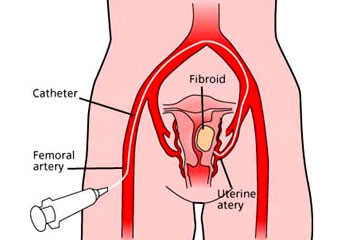The surgical treatment of uterine fibroids can range from removing fibroids only (Myomectomy) to removing the entire uterus (hysterectomy). Finally, fibroids can be treated via uterine artery embolization or UFE.
Surgery is a reasonable treatment option when:
- Heavy uterine bleeding and/or anemia has continued after several months of therapy with birth control hormones and a nonsteroidal anti-inflammatory drug (NSAID).
- Fibroids grow after menopause, which can sometime be an indication that fibroids are cancerous.
- The uterus is misshapen by fibroids, resulting in difficulty getting pregnant or recurrent miscarriages.
- The pressure and pain of fibroids is unbearable reducing one’s quality of life.
- You have urinary or bowel problems (from a fibroid pressing on your bladder, ureter, or bowel).
- There is a possibility that cancer is present.

Surgery Choices
Surgical treatment options include:
- Myomectomy, or fibroid removal. This is the only fibroid treatment that may improve your chances of having a baby. It is known to help with a certain kinds of fibroids including subserosal, intramural, and submucous fibroids.
- Hysterectomy is only recommended for women who have no future pregnancy plans. Hysterectomy is the only fibroid treatment that prevents regrowth of fibroids. It improves quality of life for many women. Myomectomy or hysterectomy can be done through one or more small incisions using laparoscopy, through the vagina, or through a larger abdominal cut (incision). The method depends on your condition, including where, how big, and what type of fibroid is growing in the uterus and whether you hope to become pregnant.
- Uterine fibroid embolization (UFE) (also called uterine artery embolization) is a nonsurgical option that shrinks or destroys a fibroid by cutting off its blood supply.

Your doctor will discuss all options with you during your appointment and will review your individual case to give you the best treatment options available.







